Some interesting pieces of memorabilia got floated in front of me and I had to scramble to collect all the loose change under the floor mats in my car and count out pennies from the change jar, but I couldn’t resist making a deal for them. Many thanks go to Elizabeth Carman, second generation Halberstadt fencer, for steering me towards Ruby Lane, an Ebay-like website for more ‘high end’ artsy pieces. Apparently, that translates to ‘more expensive’ in antique dealer parlance. Still, I couldn’t resist, especially because of the local connections. The picture at the top is just a tease though, so I’ll save that story until the end.
The first of the trio is a bronze medal, made in France by Marie Alexandre Lucien Coudray, and struck in 1910. Coudray was an Ecole des Beaux-Arts graduate who sculpted bas-reliefs and was considered one of the most important medallic artists of his time. The piece weighs 70 grams and measures 1-3/4″ high by 2-3/4″ wide. My guess is that some number of these were struck and remained for sale for years after, by one means or another. A sales office? Fencing supply companies? Trophy makers? However they were available, I suspect Jack Baker was the likely person behind delivering such a nice piece for a late-season women’s foil event in 1950. Here is the back:
The caption reads: “No Calif Div A.F.L.A Women’s Open Foils April 7, 1950 Third”. Third? A hefty chunk of bronze like this… for third? I want in on that action! Did first & second get gold & silver versions of the same? No, since Coudray’s work seems to have all been in bronze. Probably just another of the same with ‘first’ or ‘second’ engraved. Still, it’s a nice haul. Newspapers.com was helpful in providing information on the competition, although details are light. The only notice of the competition comes from the San Francisco Examiner’s April 9, 1950 Sunday edition, seen below.
So I have a name for the winner of this piece! Mrs. Gloria Isrin. Another Newspapers.com search revealed five mentions of her fencing results between February and September, 1950. Nothing prior, nothing after. I haven’t spotted a mention of her in any of the Halberstadt Scrapbooks, but that’s a deep file with secrets hidden around every corner and I can’t claim knowledge of every name mentioned therein. Would that I could. Before I forget, here is the front of the piece.
The second item now in my hands is also a bronze medal. It is about the same size, but rectangular with sharply defined edges. It weighs in at 89 grams and measures 2″ by 2-1/4″. Like the first, it isn’t a large piece, but it’s got a nice heft to it.
This one is also dated (by the seller) as being from 1910. Ernesta Robert-Mérignac was a French sculptor who’s work was featured in the sculpture event in the Arts Competition at the 1924 Summer Olympics. Here is the listing of her entries, taken from the 1924 Olympic Record:
Alas, she didn’t win. However, it strikes me that the medal in my hand is listed here, “La Lecon d’armes”, which calls into question the dating I was given for this piece. It seems unlikely to have been made in 1910, but submitted for an Olympic event in 1924. There isn’t a great deal of information available online that I could find. Most of the sources that I could find were in French but even there, the details were scant. Birth, death, she was a sculptor and that’s about it. I do have some nice clues now to go look for the other pieces listed above. Who knows? Maybe I can collect the whole set! (My banking microchip is sounding an alarm. I wonder what that’s about?) As much as I like the above piece, you can probably guess that its quality alone was not the sole reason I would purchase it, and you’d be right. It’s the back that made me sit up and ponder the purchase.
Reading the engraved inscription also gives a clue as to why I think both this and the first piece were awarded through the generosity of Northern California’s longtime organizer and fencing proponent (and National Champion), Mr. Jack Baker. For this one, there can be no doubt. “To Erich A. Funke-d’Egnuff, In Appreciation, Jack Baker”. Jack’s generosity in life was, by all accounts, unsurpassed. I have another similar item in the Archive collection, a gesture of gratitude that Jack presented to Colonel Laurance Brownlee. Here, the recipient is long-time San Francisco Fencing Master Erich Funke d’Egnuff, who taught in that city for 30 years, beginning in 1935. In addition to having his own salle d’armes, he also taught at San Francisco State University. His own acts of generosity include giving floor space to fellow Masters Hans Halberstadt and George Piller when they were new arrivals to the city.
In the case of both of these, I can’t help but wonder what paths they took to finally wind up with me. The San Francisco-based antiques dealer from whom I purchased these two medals had had both for a long time and was pretty sure he’d purchased them at an estate sale in New York. His memory was clear enough to recall that I probably paid him less than his outlay for each, although both were well outside my usual spending limit. Still, the names Jack Baker and Erich Funke d’Egnuff on this particular item made it impossible for me to pass them up.
The final item in this trio, purchased from the same dealer, is something that can only be described as ‘fencing folk art’. I can’t think of any other way to categorize it, unless it’s ‘school art assignment’, but ‘folk art’ sounds cooler, so I’ll stick with that. Remember the picture at the top of today’s article? Well, here it is again, slightly re-worked.
Here is an composite of both images, because Photoshop exists:
The original photograph of Hans with two of his fencers, Connie Dixson (lunging) and Emile Romaine, is a press photograph for a news article from 1946. The painting is undated, but signed on the back, “Iris J. Schlitz, Div. 1″ for a History of Art class. Iris got an A+ for the piece. Was the assignment specifically to trace a photograph and create a painting from it? The artist, I’ll call her Iris, made the choice of flipping the image and knocking Hans out of the way to create her A+ masterwork, but in most every other way simply copied the photo in a – pointilist? – style. The painting is 7″x9” and in what has to be its original frame. I won’t mention what I paid for it. Too much, no doubt. When I first saw the listing, it struck me as familiar. It came up on a search for ‘fencing’ on the Ruby Lane site and it was just fortunate coincidence that it was from the same San Francisco-based dealer, which allowed me to work something of a deal to get all three items. But it took a few views before the familiarity I was sensing finally hit home with me. I went back through my Hans Halberstadt images and when this popped up, I finally put it all together.
Tracking down Iris with Newspapers.com didn’t reveal much. She was from the Midwest, married a couple of times, including one annulment of a three-day excursion at the age of 19 with a soldier during WW2, but no indication of any connection to fencing that I could find. So I must assume that she just thought it was a cool picture to exploit for her art class. And since I know she was 19 in 1944 because of the initial attempt at wedded bliss and this press photo was published in 1946, I have to imagine it was a college project versus a high school one.
It seems odd in a way to be able to look back through time and uncover tid-bits of lives lived and carve out little nuggets for my posts here. Mostly, I hope, I do so with the goal of enhancing the historical understanding of the lives of well-known fencing personalities that have impacted the sport and helped shape it into the form it takes today. But it Iris’s case, I confess, the story of her annulment I just found funny. I’ll leave you with that.

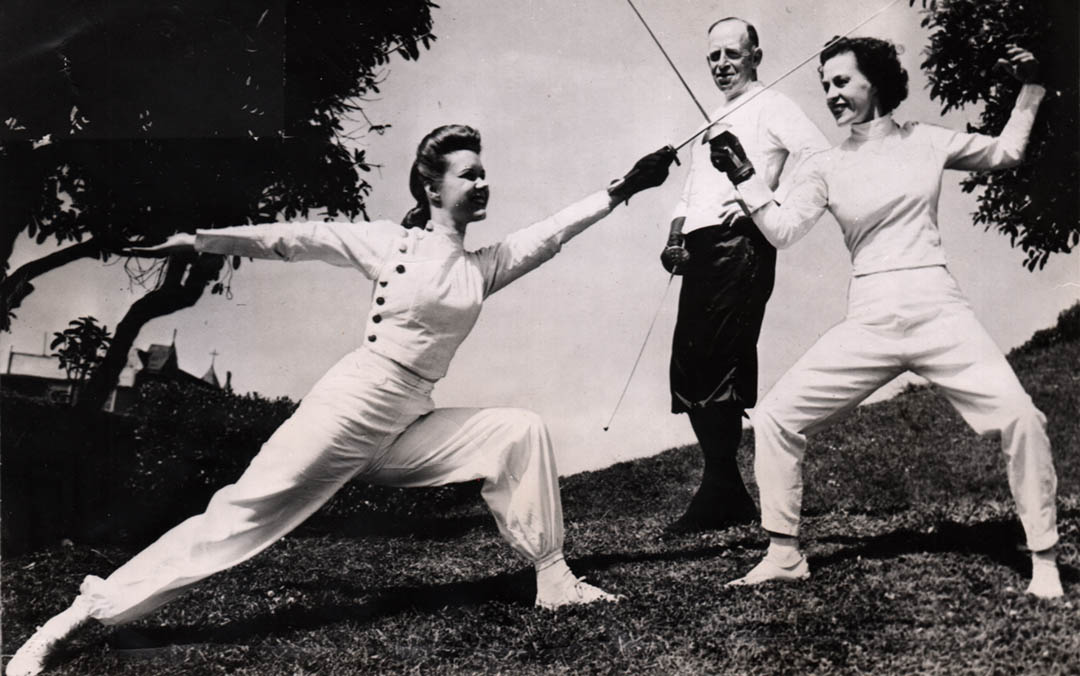
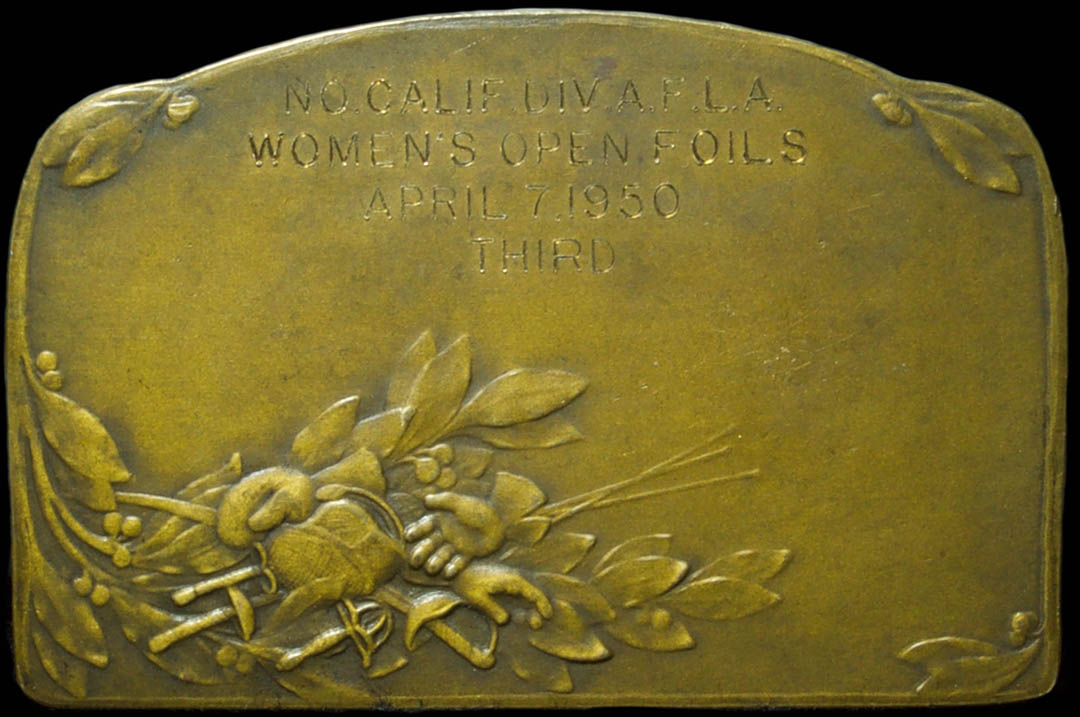
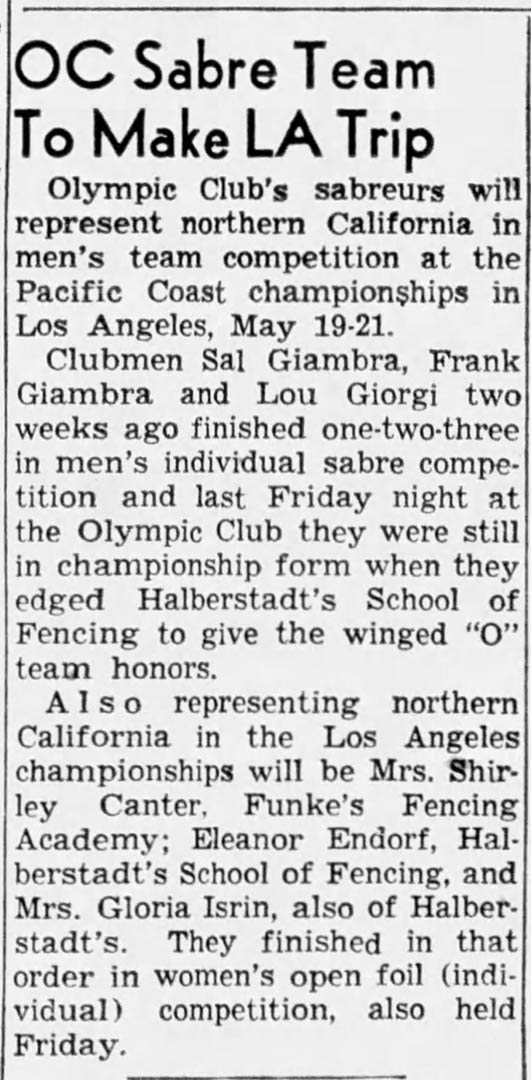

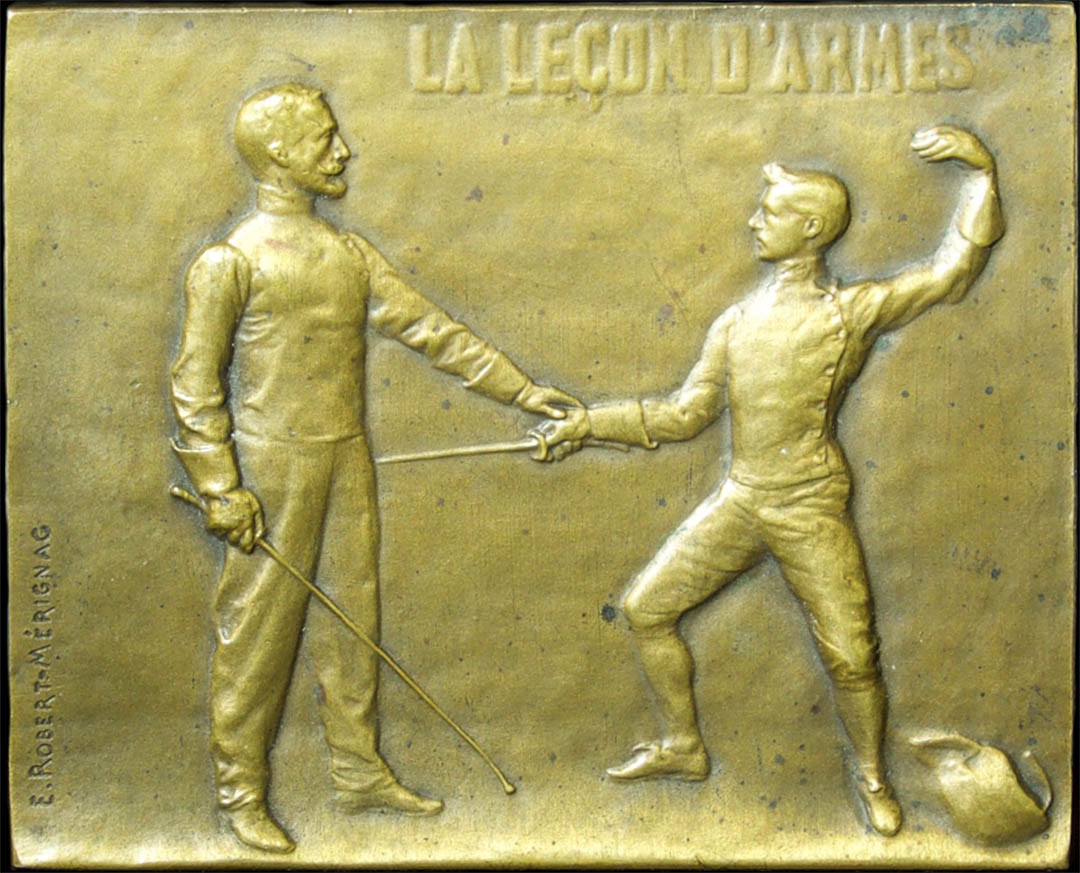

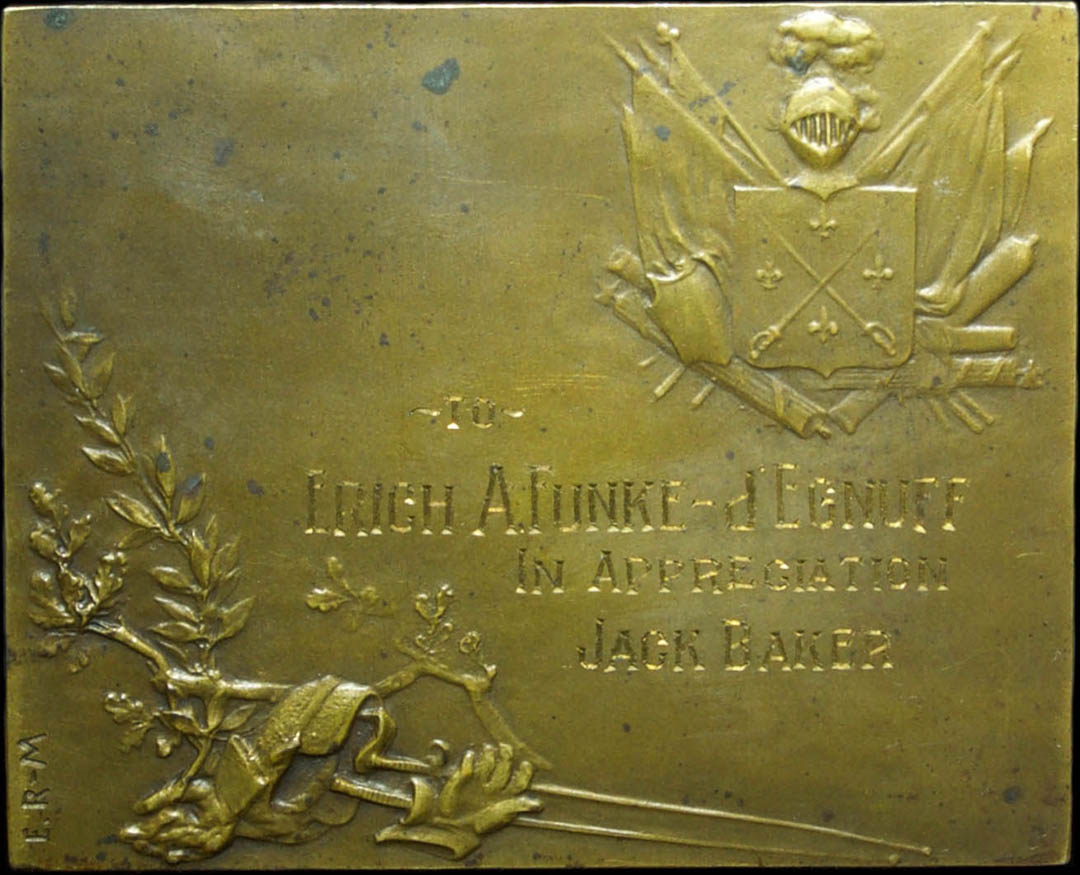

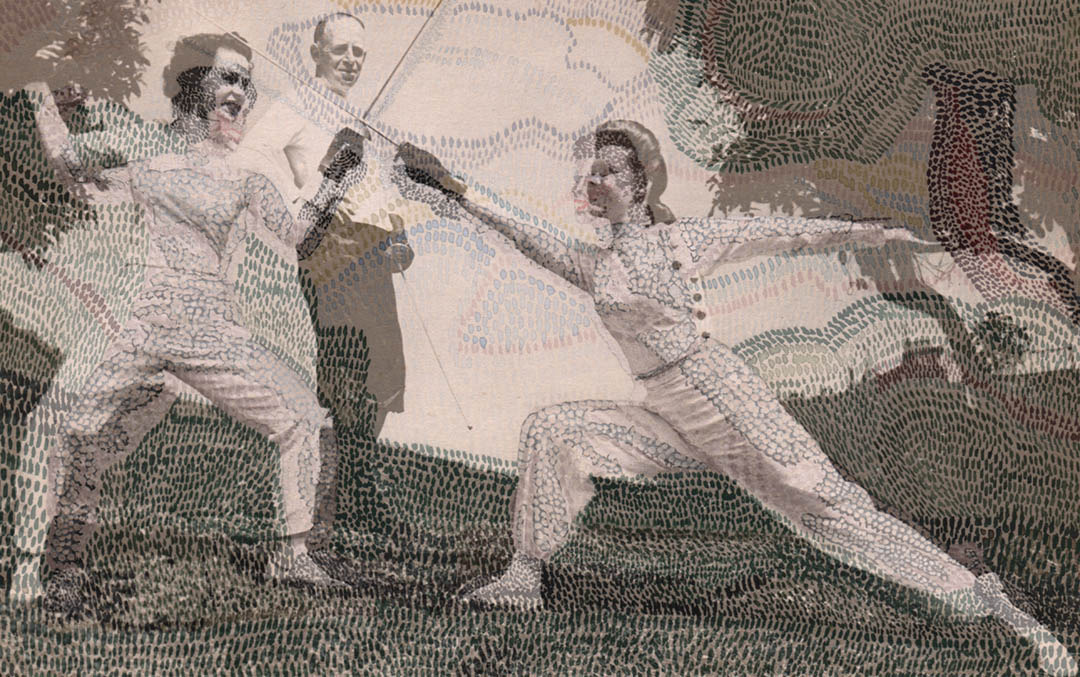
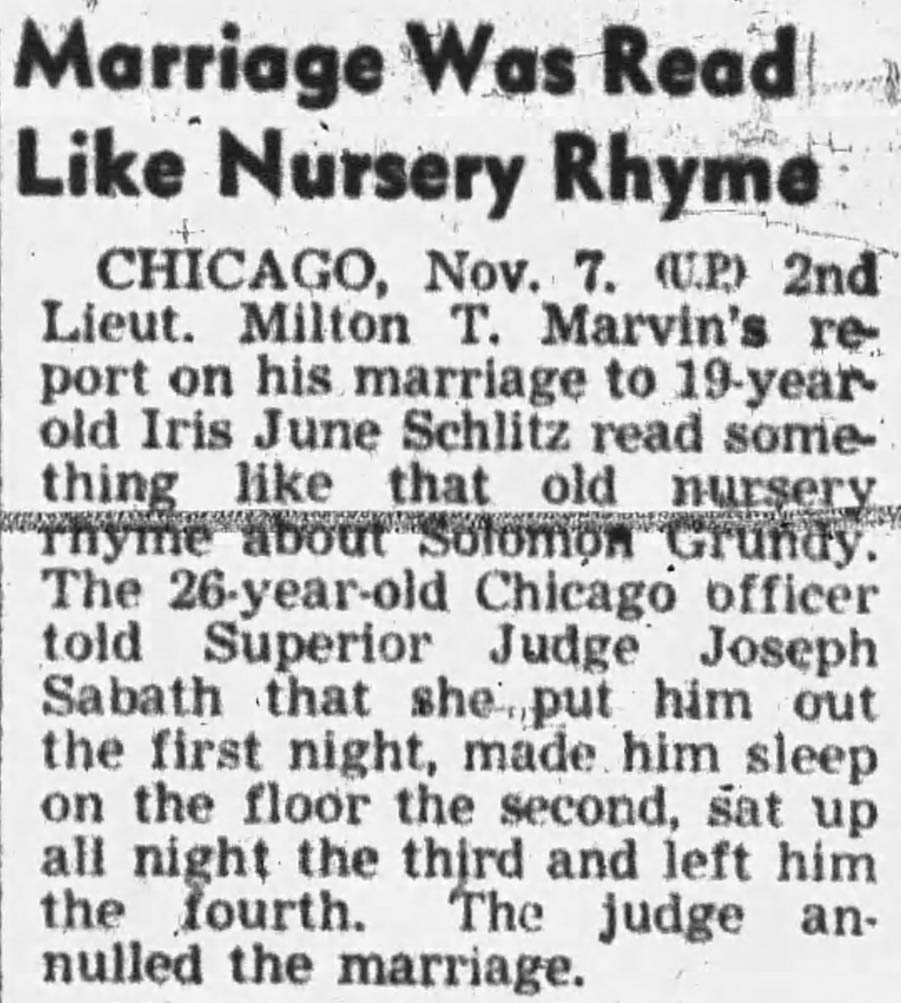
I will note that in the award for 3rd place in the 1950 LA Championships picture of the Coudray bronze that the fencer featured on the right is striking with a solid attack through a very weak sixth guard into preparation…
Froisse’ anyone?
(The deliciousness of the well timed touch!)
Artful understanding on behalf of the designer…